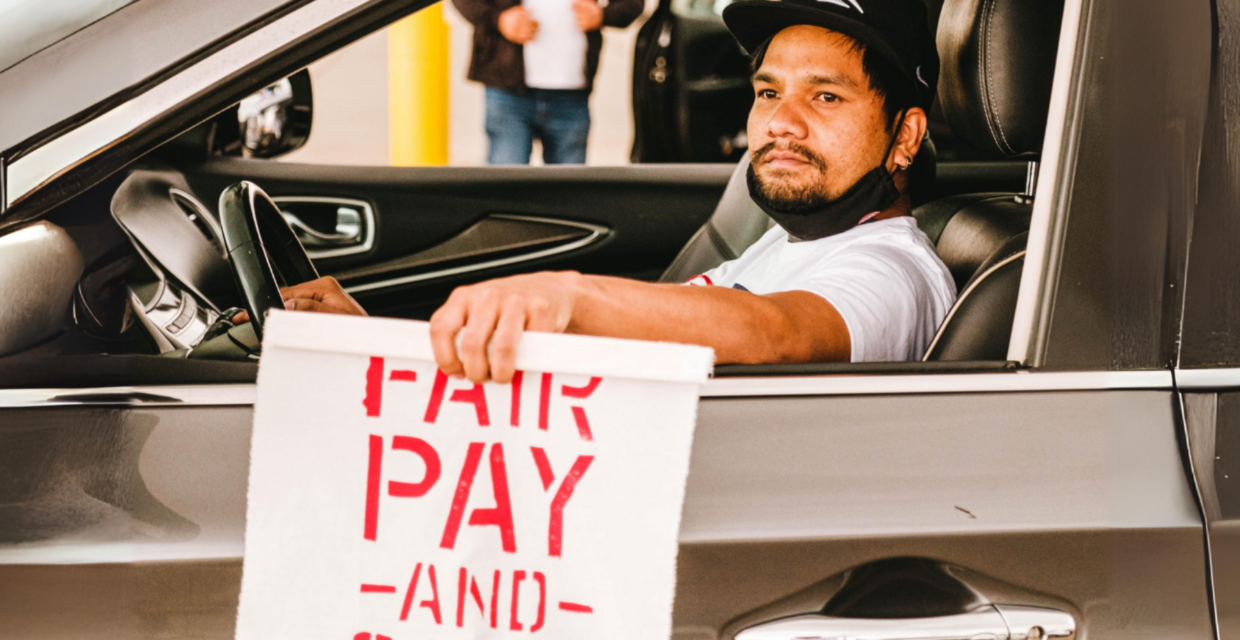
The story of the economy in the last four years has been about inflation. Consumer prices have risen 22% since 2020, caused largely by the twin supply shocks of COVID and then the war in Ukraine. But corporate price-gouging also bears responsibility for these price spikes, as major companies have used inflation as cover to raise the prices of goods and services way beyond costs, while at the same time raking in record profits. And few corporations have been price-gouging more aggressively than ridehail giants like Uber.
When Uber first entered the taxi market, it appealed to consumers with cheaper prices than most existing taxi services. Bankrolled by major venture capital firms, and dodging taxi regulations by describing itself as a “tech” company, Uber undercut the market—charging below-cost prices on rides to grow its market share, while still staying afloat. But over the last several years, the cost of ridehail services has nearly doubled. Since 2018, Uber has raised its prices by almost 18% per year, with increases in some of its major metro markets outpacing the rate of inflation by almost four times.
But it is shareholders, not drivers, who are seeing the gains. Uber is now logging record profits, but according to the limited pay data available, its drivers are making less money in real terms than they were a few years ago. In 2023, Uber drivers took home 12% less per trip than they had the previous year.
In other words, Uber has reached record profitability by gouging both consumers and drivers. Because it insists that its drivers are not employees, Uber saves even more than its competitors by not paying employment taxes and not contributing to public safety nets. In recent years, Uber has shifted to an “upfront pricing” model that decouples consumer fares from driver pay, letting Uber charge customers more and pay workers less. Now, Uber and its rival Lyft are turning to new AI-powered technologies like opaque pricing and wage algorithms to increase the spread between rider prices and driver wages. Armed with a mountain of data on consumers’ ride preferences and willingness to pay, they can set individualized prices at the highest amount you’re likely to pay—a practice the Federal Trade Commission is now calling “surveillance pricing.”
Uber has reached record profitability by gouging both consumers and drivers. Because it insists that its drivers are not employees, Uber gets away with not paying employment taxes and not contributing to public safety nets.
And the same is true for driver wages. Uber and Lyft are increasingly using these systems to pay drivers different amounts for identical work, a practice legal scholar Veena Dubal has dubbed “algorithmic wage discrimination.” If these corporations can set different wages for different workers, it’s likely the drivers most desperate for work—those with no other sources of income, disproportionately Black and immigrant drivers—who will consistently be paid the least.
From the shareholders’ perspective, these exploitative practices are a huge win. The corporations can pocket a larger portion of the consumer fare on each ride. Their take rate—i.e., the portion of each fare that the companies keep after paying driver wages—has increased sharply. According to the best industry data available, Uber was taking an average of 40% per ride in 2023, with Lyft taking home 33% (and anecdotal evidence from driver testimony suggests that the take rate on individual rides is often much higher).
Companies in other industries are surely taking note, recognizing that these profit-maximizing technologies are what the future of price-gouging looks like. Policymakers must take on corporate price-gouging in all its forms, including Uber’s AI-powered price- and wage-setting. They should limit how app-based corporations like Uber and Lyft can manipulate consumer and worker data to maximize profits. And workers should have more transparency about their earnings and how decisions that affect them are being made. With AI-driven wage and price discrimination quickly coming for other sectors, the time to act is now.
One solution to disincentivize price-gouging in ridehail would be to institute a take-rate cap, ensuring that a minimum fixed percentage of each consumer fare goes to the driver. This common-sense solution has already been proposed in several states. Even Lyft itself recognized the fairness of this proposal, pledging to drivers that they would earn a guaranteed 70% of each fare, before swiftly backtracking.
Ridehail may be the pioneering frontier of these AI-dependent technologies, but surveillance pricing is already moving to other sectors. Algorithmic wage discrimination will also likely spread far beyond ridehail to other forms of app-based or algorithmically managed work. If policymakers are serious about stopping corporate price-gouging and discriminatory pay practices, they should start regulating these technologies now.




